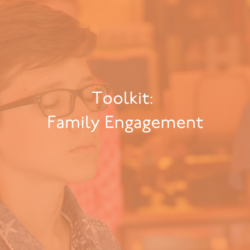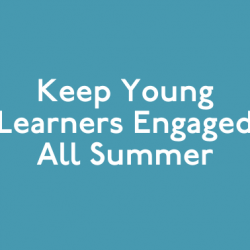As winter break approaches you might notice an uptick in difficult behaviors presented by your students and children. This is a natural result of the holidays – an exciting but taxing time of year. Between disrupted routines, anticipation of gifts, relatives and travel, parents schedules, and the possibility of snow days, it’s no wonder that students have trouble focusing. Many students are excited, but others might be feeling nervous and apprehensive that their day-to-day has been significantly altered, particularly children who are already prone to anxiety. There are a number of things we can do to help students (and ourselves) more easily transition into winter break. Here are 10 behavior tips teachers and parents can use as a break approaches:
1. Maintain consistency and keep expectations high.
As breaks approach, routines are thrown off and everyone is lacking a certain degree of consistency. Do your best to maintain consistency within schedules and be sure to maintain high expectations. It’s important that both expectations at home and in the classroom are still upheld. It might be helpful to introduce new rewards or increase the opportunities for positive incentives to help keep motivation high. Incorporating a themed incentive program can be fun way to celebrate particular times of year.
2. Establish clarity surrounding schedules and itineraries.
With the stability and foundation from routines lacking, students emotions of excitement, nervousness, and anxiety will be heightened. By clearly letting children know what is coming we can re-establish a sense of security in their days. For parents, this might mean providing a clear sense of what’s to come that day in the morning or the evening before. For teachers, you likely already have a schedule posted. Be sure to continue to lean on this by talking through the schedule with your students at the start of each day and answering any questions they might have. It’s also important for both parents and teachers to provide warnings before transitions. For students who are feeling nervous, this provides time to mentally prepare. For students who are excited, this gives them time to move to the next activity without feeling upset or disappointed.
3. Build in regular opportunities for movement and creative expression.
At Move This World, we believe in incorporating creative expression and movement into our daily routine. Providing these opportunities more regularly can be a helpful outlet for students excess energy. Movement and creative expression can be used throughout the day: as an opening kick off, a way to transition between activities, or as re-centering at the end of the day. Opportunities for movement are particularly important as winter break approaches if students are unable to go outside for recess and release the energy they normally would. Studies even suggest that providing regular opportunity for physical activity improves academic performance. A quick stretch or jumping jacks are two easy ways to get your students moving in the classroom.
4. Channel students excess energy into positive outlets.
Find outlets for students to channel their excess energy into to. This can be the perfect time for project-based learning as well as partner and group work. Offering opportunities for collaboration allows students to connect with their classmates as well as talk and discuss their ideas. With the holidays approaching, it can be a powerful time to incorporate a project that involves giving and generosity. It isn’t too difficult to tie a project like this into other academic subject areas. One example could be encouraging students to write holiday cards to children at a local hospital or sending thank you notes to key people in the school or community.
5. Channel your excess energy into a chance for experimentation.
Adults are often equally excited (and sometimes stressed) about the holidays and that excess energy can become distracting. Choose to channel the excess energy into a project that you’ve been excited about but putting on the back burner. This could include a personal project at home or a classroom project. For teachers, the time before winter break can be a great opportunity to experiment with new projects and routines. Trying something new can help to keep both you and your students engaged. Depending on how things go, these new ideas might be something you want to carry into the new year.
6. Keep your reactions and responses in check.
Naturally, there will be hiccups along the way and students will not manage their emotions appropriately 100% of the time. An uptick in behaviors is expected, and it’s important to respond calmly. Start by taking a deep breath and putting a trauma-informed mindset into practice. Reflect on the why behind the behavior, which is likely excess energy, nervousness, anxiety, or excitement as winter break approaches. Respond calmly and specifically by naming the behavior you noticed, explaining what or why an expectation wasn’t met, and talking through the possible outcomes. Ask students why they responded in this way and help them brainstorm how they could have reacted differently in the future. Be sure the next steps are clear for both you and the student. As adults, our emotions are also heightened during this time of year, so our reactions might be out of the ordinary. A simple deep breath helps to provide a moment to recenter.
7. Prioritize time for breaks, rest and relaxation.
Both children and adults need rest, and it can be hard to come by as the holidays approach. Shopping, holiday concerts, gatherings with family and friends, baking, and other celebrations can quickly fill up our calendars. Financial stress, indulgent meals, and deterring from normal routines can start to take a toll. Now is more important than ever to carve out time to reflect, reset and recharge. For parents, set aside time for both yourself and your children to take a break. For teachers, try to carve out time in your classroom for activities that can relax and provide a reset. Mindful breathing and stretching can be a great place to start. Outside of the school day, hold your time for self care sacred and carry these practices into break.
8. Quiet the countdown.
It’s tempting and natural to want to countdown to all breaks: winter, spring and summer. This is fun for the students and the teachers, but be mindful that this can raise excitement and energy levels and increase anxiety and nervousness for some. It’s also important not to send the message that you’re excited to be away from your students or need a break from them specifically. If planning a countdown, try to keep it grounded as an incentive, relate it to curricular content, or consider using it as a daily movement break.
9. Encourage authentic expression and lean on emotional management strategies.
We know that the holidays bring on different emotions for different people. For some, the holidays prompt feelings of excitement, happiness, joy and love. For others, they bring sadness and grief. Still for others, there may be feelings of stress and anxiety. Our students and children are no different. Providing daily opportunities for emotional expression is important all year, but it’s particularly important to maintain this routine during chaotic time periods. The holidays can also cause people to feel a certain degree of pressure to feel happy and joyful. Providing our children with a safe space to express any feeling is necessary. Encourage students to be honest with their feelings so that you can best meet their needs. Need help teaching your students emotional management strategies? Move This World’s 10 Emogers can help.
10. Embrace the joy and excitement.
It’s a crazy, hectic, and exciting time and it’s okay to embrace that. If allowed by your school, plan some type of holiday celebration. Embrace play and celebrate all that has been accomplished this year. Both adults and children could use more play in their day – use this time to embrace it!
Sign up for Move This World’s newsletter to stay up to date on social emotional learning.
Enter your email below!










